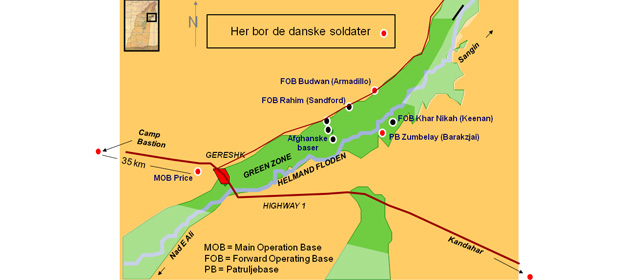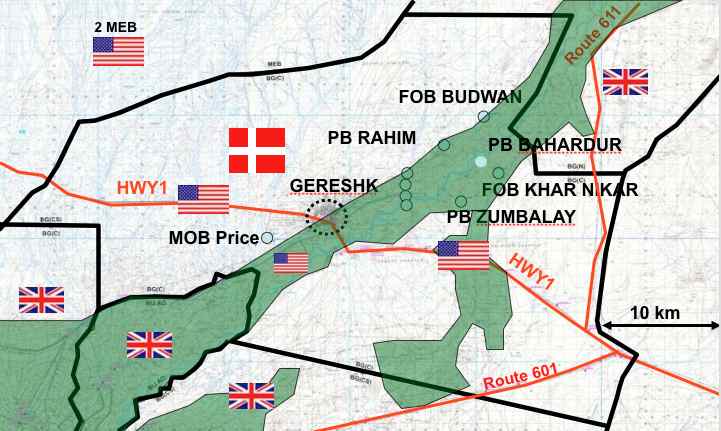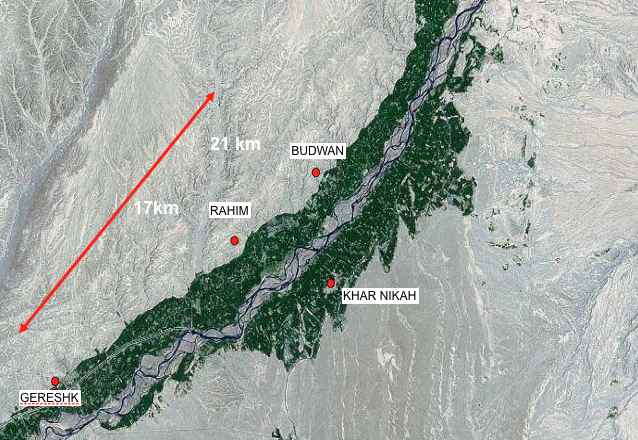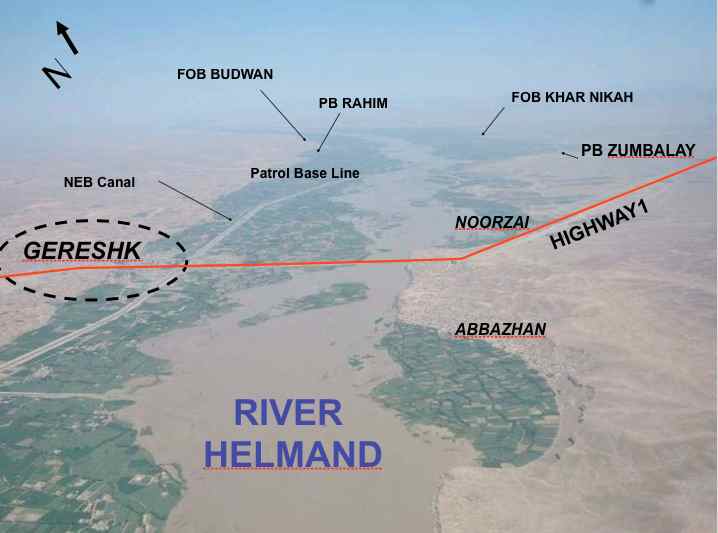FOB Budwan
Introduction
British forward operating base in Helmand province, formerly called FOB Armadillo. A small detachment of Australian artillery personnel assist British and Danish forces.

Source: Der Krieg hautnah…, Jenni Thier, Afghanistan-Blog, 15/05/2010

- Source: Opklaringsbataljonen, Briefing, CH DANCON/TFH/RC S/ISAF hold 8, <br /> 28. maj 2010.<br /> http://www.exnihilo.dk/Site/Pr%C3%A6sentationer_files/OL-Karsten-E.-Ki%C3%A6r.ppt


- Source: Opklaringsbataljonen, Briefing, CH DANCON/TFH/RC S/ISAF hold 8, 28. maj 2010. http://www.exnihilo.dk/Site/Pr%C3%A6sentationer_files/OL-Karsten-E.-Ki%C3%A6r.ppt
Government sources
?Aussie Gunners deployed with British troops in Afghanistan, Image Gallery 2010, 9 August 2010, Department of Defence [retrieved 14 August 2010]
Fourteen Australian artillery gunners from 4 Field Regiment are working and living with British artillery unit 4th Regiment Royal Artillery, out of Forward Operating Base (FOB) Budwan, Helmand Province Afghanistan. They have named their troop after Victoria Cross-winner Sir Roden Cutler and are firing their 105mm artillery guns in support of ground forces within their Area of Operations. The gunners of Cutler troop are the fifth rotation of Australian artillery serving with the British Army on Operation Herrick since 2008. At FOB Budwan the 36 British and Australian gunners share the walled space with Danish soldiers, tanks, mortars and infantry, British engineers and a British ground to ground rocket detachment. The Australian gunners return home to Australia from their six-month deployment later this year in October.
Images from Operation Herrick, Operation Slipper Image Gallery, 18 September 2008.
20080824adf8115142_036: Lieutenant Nick Cooper (26) of Cheltenham VIC makes his daily satellite phone call to higher command from atop a mortar proof living shelter at Camp Armadillo in Afghanistan’s Helmand Province. Date taken: 24 August 2008
20080826adf8115142_014: Lieutenant Nick Cooper (26) of Cheltenham VIC confirms map information versus target information after receiving a request for artillery support from a coalition patrol. Nick is the Contingent Commander of Australian Gunners and Command Post Officer controlling the Artillery fire missions conducted by Gunners from the Darwin based 8th/12th Medium regiment serving with the British Army’s 7th Parachute Regiment Royal Horse Artillery. Date taken: 24 August 2008
Analysis and commentary
Moving day Helmand style: how to turn a farm into a fortress, Anthony Lloyd, The Times, 21 January 2008.
The soldiers’ knock on the gate came just after 8am on a bitter morning of freezing rain. The Afghans were already awake and tending their livestock inside the compound. There were nearly 50, the extended family of five brothers. Farmers, they had lived in their area for generations. Their ancestors lay buried in a cemetery on a knoll above their home. Unknown to the Afghans, their home was the focal point of Operation Thunder, an ambitious British and Danish plan to seize, hold and build on a chunk of territory in the Taleban heartland of the Upper Gereshk Valley, central Helmand. Their spacious compound just happened to be the intended base for FOB Armadillo, a new base of Nato troops. So they had to move. That very day. There was compensation. After two hours of negotiation, with British troops keeping watch, the Danes agreed to pay the brothers a four-figure sum in dollars, followed by a relatively handsome monthly rent. Even so, the experience left a bitter aftertaste for many of the soldiers. It was not a high point to see an eight-year-old girl walk out of her home into January rain, clutching a watering can in one hand and a chicken in the other, knowing that you have been somehow responsible for that,” Captain Jamie Russell, commander with the Coldstream Guards, said. “A lot of the blokes felt bad about it.” The Afghans departed with good grace. No sooner was the last out of the gate than British engineers and more Danish troops were inside it. As Warrior and Leopard tanks silhouetted the ridgeline above, bulldozers arrived to begin transforming the farm into a defensive and expansive strongpoint, complete with battlements, sangars, accommodation, artillery positions, an aid post and helicopter landing site.
See also
Project coordinator: Richard Tanter
Project coordinator: Richard Tanter
Additional research: Arabella imhoff
Updated: 16 August 2010

